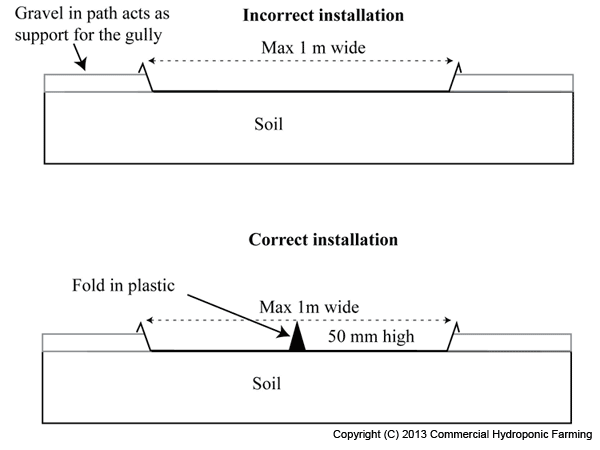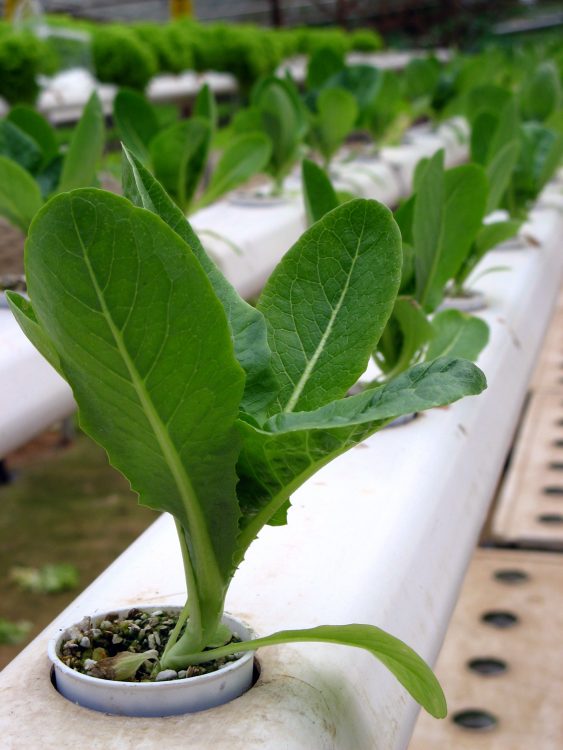The secret of successful plastic gullies in closed hydroponic systems
Plastic gullies (or also called hydro-liners) are made from thick durable plastic with a thickness between 125 micron and 500 micron. The recommended thickness to use is the 500 micron plastic. Although it is much more expensive, it is also more durable especially during the building phase where people tend to walk over the plastic gullies and damage them. The extent of the damage is only seen when the system is commissioned and water leaks out of the gullies in various spots throughout the system. These leaks can cause considerable loss in nutrient solution which is quite expensive.
There is a correct and incorrect way of installing plastic gullies, as seen in the figure below. It is important to use the fold that is imprinted in the plastic gullies provided. Some farmers claim that the fold reduces the total area and restricts plant growth, especially root development, but it is not true. The ridge in the middle of the plastic gullies restricts lateral movement water. This is important in sections where the surface of the soil on which the gully rests is not 100% true in width. In these sports one would find that the plants will not grow well on one side of the plastic gullies. By leaving the ridge the total growth area is increased although the surface is not true.
A further advantage is when a hole is found in the plastic, one side of the gully can be disabled until the plastic gully is fixed. There is no need to close the total length of the plastic gully.
The sides of the plastic gullies are kept upright using wire (provably steel wire since steel does not stretch so much). The sides are further supported by placing a layer of gravel in the paths. It is recommended that the paths should not be narrower than 0.75m. This might sound and look wide but when the plants are mature there is very little space to walk between the plastic gullies and the plants usually get damaged.
The maximum length of the gullies should not exceed 50m. The higher the angle the longer the channels can be. There is no minimum angle, however, the faster the water can move through the gullies, the less risk there is for disease developing. It is not recommended to install gullies with surface angle of less than 1.5%. The ideal angle would be between 3% and 5%. Steeper angles increase the cost of installation and makes walking through the system difficult.
One of the most important factors when preparing a surface for a GF system is to make sure it is true north to south and east to west. This means that water flowing down the channel should not tend to run sideways and it should also not form a large puddle in the middle of the gully





